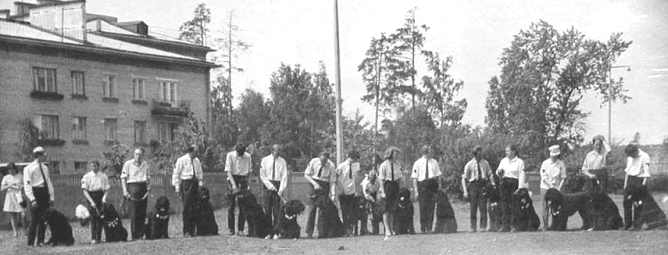The Black Russian Terrier's history is one of mystery and intrigue. Following WWII, the Soviets sought to reintroduce purebred dogs into the mainstream. Red Star Kennel, the state operated organization chartered to provide working dogs for the armed services, actively developed a new breed, the Black Russian Terrier. Though the early Black Russian Terrier did not look the same as today's, Red Star was successful early on in producing a big, strong, unpretentious dog that didn't require extensive coat care, and that demonstrated trainability and aggression to serve the Soviet Union's needs.

Under the leadership of Colonel G. Medvedev of the Central Military School of Working Dogs, The Red Star Kennel, the breed was developed. The desired characteristics were a large unpretentious, highly trainable dog to perform guard work in the varying climatic conditions of the country. Selected breeding crosses of the Giant Schnauzer, the Rottweiler, and the Airedale Terrier, were the most influential in the development of the breed. The Newfoundland and the Caucasian Ovcharka were then additional breeds utilized were used to the Great Dane and the Eastern European Shepherd and other European breeds bringing the total to 17 before the characteristics desired were consistently produced.
The first standard for the Black Russian Terrier was published in "Regulations and Requirements for Training and Usage of Military Dogs" in 1958. Just prior to this the Red Star Kennel began to sell puppies of the second and third generation crosses to hobby dog breeders creating greater diversity within the stock.
Gradually the Black Russian Terrier spread to the Baltic Countries, the Ukraine and Siberia. They spread abroad as well to Finland, Hungary, and Czechoslovakia and to the United States. The Black Russian Terrier was recognized as a breed in 1981. The USSR Ministry of Agriculture accepted the first standard on May 13th. It was internationally accepted by the FCI in 1984. In the United States, the breed was listed with Foundation Stock Services (FSS) in March of 1996, became eligible to compete in Miscellaneous Class in August 2001, with full recognition in the Working Group July 1, 2004.
